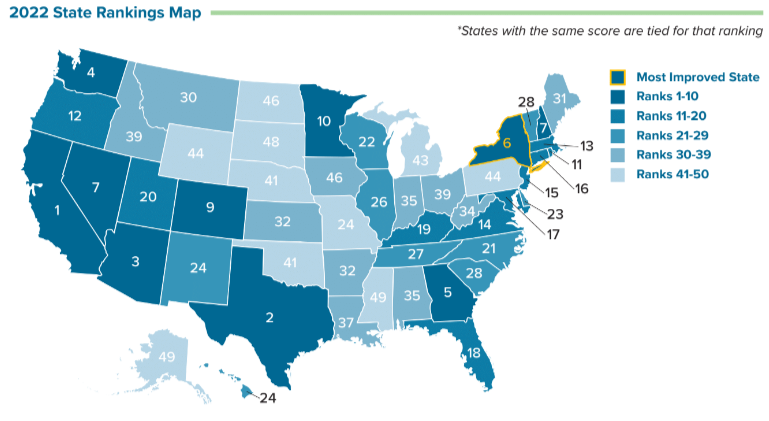Newly Released Scorecard Ranks States for Water Efficiency and Sustainability Policies
Published: January 18, 2023
 Today the Alliance for Water Efficiency (AWE) released the 2022 U.S. State Policy Scorecard for Water Efficiency and Sustainability (Scorecard), which ranked each U.S. state based on its adoption of laws and policies that advance water efficiency, conservation, sustainability, and affordability. California was the top-ranked state in the nation, followed by Texas, Arizona, Georgia, Washington, New York, Nevada, New Hampshire, Colorado, and Minnesota.
Today the Alliance for Water Efficiency (AWE) released the 2022 U.S. State Policy Scorecard for Water Efficiency and Sustainability (Scorecard), which ranked each U.S. state based on its adoption of laws and policies that advance water efficiency, conservation, sustainability, and affordability. California was the top-ranked state in the nation, followed by Texas, Arizona, Georgia, Washington, New York, Nevada, New Hampshire, Colorado, and Minnesota.
While some states improved since AWE’s previous Scorecard was released in 2017, the analysis found little progress overall, even as droughts and other climate change impacts increasingly undermine affordable, reliable water services. The average state score was only 23 out of 89 possible points.
Key findings include:
- Connecticut was the only state that reported using its own funds to support customer water bill assistance
- California is the only state that requires water utilities to plan for climate change
- 18 states use their own revenues to fund water efficiency and conservation
- 16 states provide funding for water reuse.
- 13 states require rate structures that encourage water efficiency
- 19 states require coordination between local land use and water planning agencies.
Despite the low scores, there were some bright spots, including ten states adopting point-of-sale plumbing efficiency requirements since 2017 that go beyond federal standards, for a current total of 15 states plus the District of Columbia.
Click here to download the full report and access individual state scorecards.

